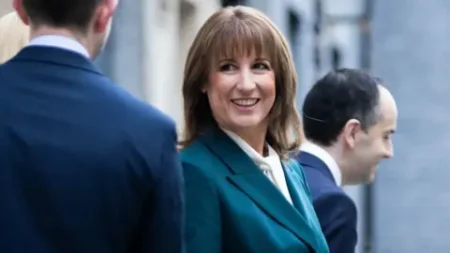In a significant development for homebuyers across the United Kingdom, the average two-year mortgage rate has finally dipped below the 5% mark for the first time since the tumultuous days of former Prime Minister Liz Truss’s mini-budget in September 2022. According to data from Moneyfacts, the new average starting now stands at 4.99%, which many analysts are describing as a “symbolic turning point” that could reshape the mortgage landscape for potential buyers. The recent drop reflects a growing competitive spirit among lenders, signaling a positive shift albeit still within a cautious market environment.
The recent lowering of interest rates—five cuts since the previous August—has set the stage for this pivotal moment. However, during the Bank of England’s most recent meeting, a notable split vote among policymakers has raised questions about whether any further cuts will be implemented this year. A spokesperson for Moneyfacts indicated that while mortgage rates are aligning with the decreasing trend set by the Bank’s decision, they are unlikely to see substantial decrease in the near future, suggesting that the market remains in a delicate balance.
As the mortgage landscape evolves, many borrowers face an important crossroads. Hundreds of thousands of people are due to re-mortgage in the current year, raising significant interest in securing favorable rates. The banking industry representative, UK Finance, has reported an alarming figure: approximately 900,000 fixed-rate deals are set to expire in the latter half of 2025, contributing to an overall figure of 1.6 million for the entire year. Yet, it is essential to note that current mortgage rates remain considerably higher than the record lows seen prior to the controversial mini-budget delivered by Truss’s then-chancellor, Kwasi Kwarteng. This mini-budget proposed £45 billion in unfunded tax cuts and swiftly instigated market chaos, leading to dramatic increases in UK government borrowing costs.
Analysts observed that by July 2023, the costs associated with mortgages had soared to their highest levels since the financial turbulence of 2008. The upward trajectory had already begun as central banks around the globe sought to address rising inflation, conditions exacerbated by global energy supply disruptions stemming from geopolitical tensions, particularly following Russia’s full-scale invasion of Ukraine.
In light of recent financial forecasts, the Bank of England has updated its predictions, suggesting inflation may spike higher than initially expected, hitting around 4% in September before gradually decreasing to around 2% by 2027. As indicated by Moneyfacts, this prediction implies that the base interest rate is likely to remain around its current level of 4% for an extended period, a crucial detail for borrowers who will need to navigate this pattern in the coming months.
The data presented in various infographics underscores the fluctuations in mortgage rates over time. For example, the average interest rate for two-year fixed deals started at an alarming 2.38% on January 1, 2022, rapidly climbing to 4.74% on the day Truss announced her mini-budget. The situation worsened with a peak of 6.65% in late October 2022, showcasing a volatile market landscape. It subsequently saw a decline to approximately 5.30% before another rise to 6.85% in early August 2023, concluding with the current reduction to 4.99% once again.
In conclusion, while the latest dip in mortgage rates below the 5% threshold brings a glimmer of hope to homebuyers navigating a tumultuous economic climate, the broader context remains laden with uncertainty. The ongoing evolution of interest rates amidst fluctuating economic indicators will be a key factor that potential buyers need to monitor closely as they make decisions regarding home financing. This moment marks a crucial intersection where both lenders and borrowers will need to adapt as market conditions continue to evolve in a challenging financial landscape.











